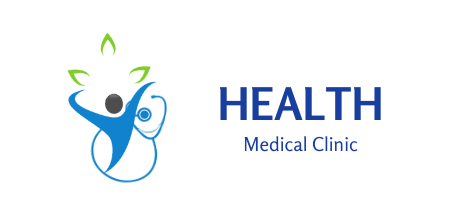Table of Contents
Introduction
A. Definition and Overview
Tigecycline, a formidable player in the realm of antibiotics, emerges as a glycylcycline with distinctive qualities. In the world of microbial combat, it stands tall as a potent weapon against a spectrum of bacterial foes. As we embark on this journey into the depths of Tigecycline, it’s essential to grasp its fundamental essence.
B. Significance in Antibiotic Therapy
In the intricate landscape of antibiotic therapy, Tigecycline carves its niche with unique features that set it apart from the conventional arsenal. Its classification as a glycylcycline antibiotic points to its prowess in navigating the challenges posed by certain bacterial strains. But what prompts healthcare providers to reach for Tigecycline in specific cases? What makes it the chosen guardian in the face of certain bacterial adversaries?
As we delve deeper, we’ll unravel the intricacies that make Tigecycline not just a treatment, but a strategic choice in the complex chessboard of antibiotic therapy. Join us in deciphering the significance of Tigecycline, understanding its role, and exploring the scenarios where it emerges as the hero in the battle against bacterial infections.
II. Mechanism of Action
A. Targeting Bacterial Protein Synthesis
At the heart of Tigecycline’s effectiveness lies its remarkable ability to disrupt bacterial protein synthesis. Imagine it as a sentinel within the bacterial factory, intricately involved in obstructing the assembly line. Tigecycline achieves this by binding to the bacterial 30S ribosomal subunit, the crucial machinery responsible for protein production.
Explanation of how Tigecycline inhibits protein synthesis:
Tigecycline’s strategic blockade interferes with the messenger RNA’s journey, hindering the delivery of essential instructions for protein construction. The result? A halt in the production of vital bacterial proteins, disrupting their life-sustaining processes.
Impact on bacterial growth and replication:
This interference strikes at the core of bacterial growth and replication. Without the ability to synthesize essential proteins, bacteria find themselves incapacitated, unable to proliferate and spread. Tigecycline, acting as a molecular roadblock, curtails the very foundation of bacterial life.
B. Interaction with Ribosomes
The dance of Tigecycline with bacterial ribosomes is a choreography of precision, an intricate molecular ballet. Its interaction with the 30S ribosomal subunit is not a mere disruption but a targeted strike against specific pathogens.
Insights into how Tigecycline interacts with bacterial ribosomes:
Tigecycline’s affinity for bacterial ribosomes is akin to a lock and key mechanism. It fits snugly into the bacterial 30S subunit, disrupting the harmony necessary for protein synthesis. This targeted interaction ensures that Tigecycline’s impact is directed with surgical precision, honing in on the bacterial culprits responsible for infections.
Specificity in targeting certain pathogens:
What sets Tigecycline apart is its discriminatory prowess. It doesn’t cast a broad net; instead, it selectively targets certain pathogens, making it a tailored weapon against specific bacterial adversaries. This specificity enhances its effectiveness while minimizing collateral damage to the body’s beneficial bacteria.
As we unravel the molecular ballet of Tigecycline, we gain a deeper appreciation for its precision in disrupting bacterial life. Join us on this microscopic journey as we explore the intricacies of Tigecycline’s dance with bacterial ribosomes.

III. Therapeutic Applications
A. Spectrum of Activity
In the vast battlefield of bacterial infections, Tigecycline stands as a versatile warrior with a unique spectrum of activity. Understanding its reach is crucial in appreciating its role in antibiotic therapy.
Discussion on the range of bacterial infections Tigecycline is effective against:
Tigecycline’s efficacy extends across a spectrum that encompasses various bacterial adversaries. From the menacing Gram-positive bacteria like Staphylococcus aureus to the cunning Gram-negative organisms such as Escherichia coli, Tigecycline exhibits a broad-reaching influence. Its potency also extends to certain multi-drug resistant strains, making it a strategic choice in challenging clinical scenarios.
Comparison with other antibiotics in terms of spectrum:
How does Tigecycline fare in comparison to its antibiotic counterparts? Unveiling this involves delving into its unique spectrum and understanding where it shines brightest. While some antibiotics excel in specific niches, Tigecycline’s broad spectrum positions it as a formidable contender in the complex landscape of bacterial infections.
B. Common Infections Treated
Armed with a diverse spectrum, Tigecycline emerges as a frontline choice in combatting various infections. Let’s explore where it often takes center stage.
Examples of infections where Tigecycline is commonly prescribed:
- Complicated Skin and Soft Tissue Infections (cSSTI): Tigecycline’s efficacy in treating infections involving the skin and soft tissues makes it a go-to option.
- Intra-Abdominal Infections: Its reach extends to the intricate terrain of the abdomen, addressing infections that demand a potent and versatile antibiotic.
Cases where Tigecycline may be preferred over other antibiotics:
In the chessboard of antibiotic selection, why does Tigecycline make strategic moves? Instances where its unique spectrum, especially against multidrug-resistant strains, positions it as the preferred choice. Whether it’s due to its efficacy against resistant pathogens or its suitability in cases where other antibiotics may falter, Tigecycline emerges as a calculated choice in the hands of healthcare providers.
Join us in the exploration of Tigecycline’s therapeutic applications, deciphering the infections it confronts and understanding why it takes the lead in certain clinical scenarios.

IV. Dosage and Administration
A. Weight-Based Dosing
Tigecycline’s effectiveness lies not just in its molecular precision but in the tailored dosing strategies that consider individual factors, primarily patient weight.
Explanation of how dosages are determined based on patient weight: The art and science of Tigecycline dosing start with a patient’s weight. Understanding this process involves unraveling the intricate calculations that healthcare providers undertake. Tigecycline’s dosage is often determined in milligrams per kilogram of body weight, ensuring that each patient receives an optimal and personalized amount of the antibiotic. This weight-based dosing strategy aims for precision, acknowledging that a one-size-fits-all approach may not be the most effective in the world of antibiotics.
Considerations for different age groups: Pediatric and geriatric populations introduce additional layers of complexity to dosing considerations. How does Tigecycline navigate these age-related nuances? From the delicate balancing act required in pediatric dosing to the adjustments needed for the aging physiology in geriatric patients, Tigecycline’s dosing strategy is a testament to the individualized care it offers across diverse age groups.
B. Intravenous Administration
The journey of Tigecycline into the body involves a strategic entry point – the intravenous route. Let’s unravel the details of this administration method.
Details on the administration of Tigecycline intravenously: Tigecycline is often administered directly into the bloodstream, ensuring a swift and effective delivery to the site of infection. Understanding the logistics of this intravenous administration involves exploring the infusion process, dilution requirements, and the crucial timing that influences its therapeutic impact.
Situations where intravenous administration is preferred: In the grand tapestry of healthcare scenarios, why does Tigecycline often take the intravenous route? Exploring situations where the intravenous administration of Tigecycline is the preferred choice sheds light on its rapid onset of action, especially in critically ill patients or those unable to tolerate oral medications.
Join us in this exploration of Tigecycline’s Dosage and Administration, where precision meets practicality in the quest for effective antibiotic therapy.

V. Monitoring and Adjustments
A. Importance of Therapeutic Drug Monitoring
In the dynamic landscape of antibiotic therapy, the journey doesn’t end with administration. Monitoring Tigecycline levels becomes a critical phase, ensuring that the therapeutic dance between the antibiotic and the infection maintains its harmonious rhythm.
Explanation of why monitoring Tigecycline levels is crucial: Tigecycline, like any skilled performer, requires a watchful audience. Understanding the nuances of therapeutic drug monitoring involves recognizing that optimal levels are the key to success. Monitoring Tigecycline levels in the bloodstream ensures that the antibiotic maintains a sweet spot – neither too much to cause toxicity nor too little to compromise its efficacy. This vigilant oversight becomes especially crucial in patients with varying medical conditions or those undergoing concomitant therapies.
Ensuring optimal therapeutic outcomes through monitoring: The ultimate goal of this monitoring ballet is to orchestrate optimal therapeutic outcomes. By fine-tuning Tigecycline levels, healthcare providers can tailor the antibiotic’s impact, optimizing its effectiveness against the targeted bacteria. This personalized approach enhances the likelihood of successful treatment outcomes and minimizes the risk of adverse effects.
B. Renal Function Monitoring
As Tigecycline takes center stage in antibiotic therapy, its interactions with the body’s intricate systems, particularly the kidneys, demand careful observation.
Discussion on the impact of Tigecycline on renal function: Tigecycline’s entrance into the bloodstream doesn’t go unnoticed by the kidneys. Understanding the impact of Tigecycline on renal function involves exploring its excretion patterns and potential effects on kidney health. While Tigecycline is generally considered kidney-friendly, specific scenarios warrant a closer look at renal function to ensure the antibiotic’s safety.
Guidelines for monitoring patients with renal impairment: For patients with compromised renal function, the monitoring playbook takes a more pronounced role. Guidelines for monitoring Tigecycline in these cases involve adjusting dosage regimens or extending dosing intervals. Navigating this delicate balance ensures that Tigecycline remains a therapeutic ally without posing undue stress on the kidneys.
Join us in this exploration of Monitoring and Adjustments for Tigecycline, where the symphony of therapeutic drug monitoring and renal function oversight contributes to a finely tuned performance in antibiotic therapy.

VI. Side Effects and Adverse Reactions
A. Common and Rare Side Effects
Every protagonist has its complexities, and Tigecycline is no exception. As we delve into its intricacies, understanding the spectrum of side effects becomes crucial.
Overview of side effects associated with Tigecycline: Tigecycline’s therapeutic prowess is accompanied by a cast of potential side effects. From the mundane to the noteworthy, this overview sheds light on the various reactions that may accompany its administration. Whether it’s gastrointestinal disturbances, alterations in liver enzymes, or the occasional bout of nausea, comprehending the landscape of side effects equips both healthcare providers and patients with the knowledge to navigate potential challenges.
Differentiating between common and rare reactions: Not all side effects are created equal. Some are frequent companions, making regular appearances, while others lurk in the shadows, emerging less frequently but with greater impact. Distinguishing between common and rare reactions allows for a nuanced understanding. What can one expect as part of the ordinary Tigecycline experience, and when should the alarm bells ring for those less common but potentially serious reactions? This exploration ensures informed decision-making in the face of potential side effects.
B. Allergic Reactions
In the realm of antibiotics, the potential for allergic reactions adds a layer of complexity. Tigecycline, despite its efficacy, is not immune to these possibilities.
Exploring the potential for allergic reactions: As Tigecycline interacts with the body, the immune system’s response becomes a critical factor. This section delves into the potential for allergic reactions, ranging from mild skin rashes to more severe manifestations. Recognizing the signs of an allergic response is paramount, and understanding the triggers that may lead to such reactions equips both patients and healthcare providers with the knowledge to respond swiftly and effectively.
Guidance on recognizing and managing allergic responses: What steps can be taken if the curtain rises on an allergic reaction? This exploration offers practical guidance on recognizing the signs of an allergic response and outlines the necessary steps for managing these reactions. From discontinuing Tigecycline to seeking prompt medical attention, this guidance ensures a proactive approach to safeguarding patient well-being.
Join us in this exploration of Tigecycline’s Side Effects and Adverse Reactions, where knowledge becomes a shield against potential challenges on the road to recovery.

VII. Special Considerations
A. Use in Pediatrics and Geriatrics
Tigecycline, the versatile warrior in the antibiotic arsenal, adapts its strategies when facing the unique landscapes of pediatric and geriatric populations.
Considerations for prescribing Tigecycline in pediatric and geriatric populations: The pediatric and geriatric realms introduce nuanced considerations. Tigecycline’s role in pediatric patients involves not only efficacy but also safety considerations tailored to the developing physiology of children. Similarly, in the geriatric arena, where the landscape is marked by age-related changes, Tigecycline’s prescription requires a delicate balance between efficacy and the potential for age-associated vulnerabilities.
Dosage adjustments based on age-related factors: The dosing playbook undergoes subtle adjustments as Tigecycline navigates the age spectrum. This section unravels the considerations that guide dosage adjustments in pediatric and geriatric patients. From weight-based calculations in pediatrics to accounting for altered drug metabolism in the elderly, Tigecycline’s adaptability shines through.
B. Pregnancy and Lactation Considerations
The intersection of antibiotic therapy and maternal health adds layers of complexity. Tigecycline, as a guardian against bacterial foes, steps onto this stage with caution and consideration.
Insights into the safety of Tigecycline during pregnancy and lactation: Pregnancy and lactation necessitate a careful evaluation of the risks and benefits. This section provides insights into Tigecycline’s safety profile during pregnancy and its potential impact on lactating mothers. Understanding the delicate dance between maternal health, fetal well-being, and the need for effective antibiotic therapy allows for informed decision-making.
Balancing benefits and potential risks in these situations: How does one strike the balance between the benefits of Tigecycline and the potential risks during pregnancy and lactation? This exploration offers guidance on making informed decisions, considering the specific clinical context and the imperative of maternal and fetal health.
Join us in this exploration of Tigecycline’s Special Considerations, where the spotlight turns towards the distinctive needs of pediatric and geriatric patients, as well as the delicate balance required in the realm of pregnancy and lactation.

VIII. Tigecycline and Antibiotic Resistance
A. Emerging Challenges
In the ever-evolving battle against bacterial foes, Tigecycline faces its own set of challenges, particularly in the realm of antibiotic resistance.
Discussion on challenges related to Tigecycline resistance: As with any stalwart defender, Tigecycline confronts the ominous specter of resistance. This section delves into the challenges associated with Tigecycline resistance, exploring the factors that contribute to its emergence. From the molecular intricacies within bacterial strains to the selective pressures imposed by widespread antibiotic use, understanding these challenges is crucial in devising effective strategies for resistance mitigation.
Strategies for mitigating resistance development: How can we fortify Tigecycline against the onslaught of resistance? This exploration unfolds strategies aimed at mitigating resistance development. From stewardship programs that promote judicious antibiotic use to ongoing research into combination therapies, the arsenal against resistance takes shape. Tigecycline, in this context, becomes not just a treatment but a strategic player in the broader fight against antibiotic resistance.
B. Future Directions
As the story of Tigecycline unfolds, the narrative extends into the future, marked by innovations and ongoing research.
Innovations and ongoing research in the use of Tigecycline: What does the future hold for Tigecycline? This section peers into ongoing research and innovations, highlighting the strides being made to enhance its efficacy. Whether it’s exploring new formulations, investigating combination therapies, or unveiling novel applications, Tigecycline’s journey extends beyond the present, promising advancements that could reshape its role in antibiotic therapy.
Its role in addressing evolving antibiotic resistance issues: In a world grappling with the relentless evolution of antibiotic resistance, Tigecycline stands as a beacon of hope. This section outlines how Tigecycline, with its unique characteristics, contributes to addressing evolving antibiotic resistance issues. From its potency against resistant strains to its role in combination therapies, Tigecycline emerges as a key player in the ongoing battle against resistance.

IX. Conclusion
A. Recap of Tigecycline’s Significance
As the final act unfolds, let’s revisit the essence of Tigecycline, summarizing its significance in the realm of antibiotic therapy.
Summarizing key points about Tigecycline: Tigecycline, with its unique mechanism of action, versatile spectrum, and strategic adaptability, has carved a distinctive niche in the antibiotic landscape. This recap emphasizes its role in specific medical contexts, where its strengths shine brightest.
B. Encouraging Responsible Use
The curtain falls on a note of responsibility, urging readers to consider the broader implications of antibiotic use.
Advocacy for responsible antibiotic use: The journey with Tigecycline concludes with a call for responsible antibiotic use. This section advocates for judicious decisions, emphasizing that antibiotics are precious resources that demand careful stewardship. It encourages readers to consult healthcare professionals for proper guidance, ensuring that the power of antibiotics is wielded with wisdom and foresight.
Join us in this final act, where Tigecycline’s story merges with the broader narrative of antibiotic therapy, resilience against resistance, and the collective responsibility we bear in preserving these invaluable tools for future generations.

